#italy in ww2
Text
*modern trench warfare being used for the first time in a major conflict during the American civil war*
*trench warfare leaving mental scars on Alfred that takes years of healing to move past*
Alfred showing up to Europe and seeing they somehow made trench warfare worse

#He saw that shit and decided real quick he'd rather be shot out of the sky#trench warfare actually can be found throughout history but was reading a book the other week that talked about how#the roots of how it was used in WW1 and then WW2 could be traced back to how it was used during the US's civil war#hws america#historical hetalia#hetalia#hws#aph#alfred f jones#aph america#hws england#hws canada#hws france#hws germany#hws italy#hws russia#hws china#hetalia ww2#hetalia ww1
352 notes
·
View notes
Text
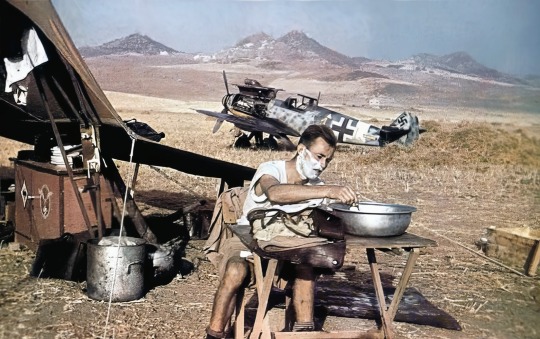
A German pilot shaving next to his Messerschmitt Bf 109 fighter plane. Italy, 1943
➤➤ VIDEO: https://dronescapes.video/Bf109Doc
#youtube#aircraft#airplane#aviation#dronescapes#military#documentary#ww2#wwii#aviation history#italy#messerschmitt#bf 109#luftwaffe#world history#world war 2
149 notes
·
View notes
Text
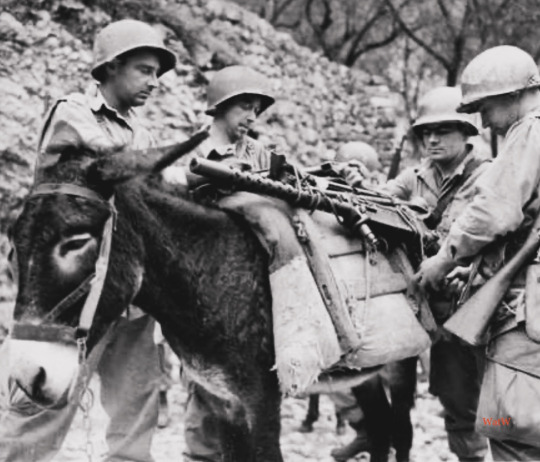
US soldiers load their supplies onto a mule due to the rough terrain - Monte Cassino, Italy, Dec 1943
#world war two#ww2#worldwar2photos#history#1940s#ww2 history#wwii era#world war 2#ww2history#wwii#1943#monte cassino#Italy#mule#packhorse#usarmy#us armed forces#us army
124 notes
·
View notes
Text

German Fallschirmjäger (paratrooper) on a Zündapp KS750, Italy, Sep 1943
#germany#ww2#zündapp#ww2 german motorcycles#german motorcycles#italy#1943#fallschirmjäger#paratroopers#ww2 german army#luftwaffe
112 notes
·
View notes
Text
The Two Ministers: Galeazzo Ciano and Joachim von Ribbentrop
Probably the one of the two most interesting figures. Since I make researches mostly on Fascist Italy, it was intriguing to read Galeazzo Ciano's perspective and thoughts on Joachim von Ribbentrop, his German colleague Minister. One thing is certain: both men didn't like each other. It was a huge despise from both parties.
Ciano thought of Ribbentrop as a "too cynical and suck up" kind of man. Meanwhile, Ribbentrop considered Ciano as a "hiding traitor, playing the double-agent role for the democratic countries".
Fun fact: Galeazzo Ciano's diaries were used by the Allies as a proof against Joachim von Ribbentrop in the Nuremberg Trials.
-----
On May 22, 1939, the Kingdom of Italy and Nazi Germany entered into the Pact of Steel signed by their respective Foreign Ministers Galeazzo Ciano and Joachim von Ribbentrop. This agreement was greeted with great enthusiasm by the press: "unfailing friendship between our two peoples." Ciano wrote in his diary, a few days after his execution in January 1944: "The tragedy of Italy began in August 1939. On my own initiative, I went to Hitler's headquarters in Salzburg and was suddenly confronted with the cold and cynical Germanic determination to provoke the conflict. The alliance between Italy and Germany had been signed in May. I had opposed it, making every effort to delay such a step, or at least make it ineffective. There was no reason, on the other hand, in my opinion, to bind oneself for life and death to the fate of Nazi Germany. I had favored, it is true, a policy of cooperation, because of our geographic location, because we can and should detest, but not ignore that eighty million Germans brutally burden the heart of Europe. The decision to cement the alliance was made suddenly by Mussolini, while I was in Milan with Ribbentrop. Several American newspapers had published that the Lombard metropolis had welcomed the Reich Foreign Ministry with blatant hostility, and this was evidence of Mussolini's diminished personal prestige. He was in a state of rage. By telephone he ordered me to accept the German demands for an alliance, which I had held in abeyance for more than a year and hoped to send off again. Thus was born the "Pact of Steel." This decision, which was then to have such a disastrous influence on the life and future of the Italian people, was due solely to a spiteful reaction on the part of the dictator to certain rash and baseless statements in some foreign newspapers." Actually Mussolini is worried because subsequent to the Pact of Steel the Nazis assure him that they do not want to wage war for the time being, but he is beginning to be not so sure. Italy in 39' is completely depleted, exhausted by the Ethiopian War and the intervention in Spain on the side of Franco, later the winner of the civil war. Despite the positive outcome, wars cost huge sums of money and the Italian budget suffers greatly; entering a world war in this condition would be difficult to sustain. Galeazzo Ciano, Foreign Minister as well as Mussolini's son-in-law, writes in his diary in early August, "the time has come to see how things stand: the game is too big."
On August 11 Ciano flies to Germany, is sent to von Ribbentrop with instructions to explain to him that to wage war at that time would be madness. On the question of Poland, the Kingdom Minister asks his peer, "do you want Danzig?" von Ribbentrop replies, "not anymore, we want war." Later, during the reception, Ciano approaches one of his aides and says in his ear, "we are at blows." Ciano, worried, wonders if the Germans have considered the likely intervention of England and France and how they intend to deal with them. But Ribbentrop is sure, they will not dare to intervene, Germany will invade Poland and have a free field. It is a bet on the non-intervention of the Western powers, as in 1914, when Kaiser Wilhelm's Germany invaded Belgium sure of no consequences from England. This time they really make the bet: von Ribbentrop proposes to Ciano that if England and France stayed out then Italy would give Germany a Renaissance painting; if not, Germany would give Italy a collection of ancient German weapons. But Ribbentrop is sure: "We will wage war and it will not become a world war, because France and England will not dare to intervene."
Ciano returns to Rome, and it is now clear that the Nazis are about to invade Poland, as well as that Hitler expects Fascist Italy, as declared at the 1937 Berlin Assembly by Mussolini, to march with its ally all the way. But the Führer does not know that Italy is prepared to hold out to avoid imminent catastrophe given the weakness of the army. When the Duce finally comes forward and confesses his country's total unpreparedness, the Germans first turn up their noses, then they are fine with it as long as Italy's neutrality is not flaunted too much around. On September 1, 1939, Germany invaded Poland triggering the tremendous conflict that for six years displayed the greatest atrocities in human history. Italy would enter it about a year later when during the famous Piazza Venezia speech on June 10, 1940, Mussolini announced that "The declaration of war has already been delivered to the ambassadors of Great Britain and France." It was "the hour of irrevocable decisions" that led Mussolini and the Fascist regime to its fall.
--------
Sources: Alessandro Barbero, Galeazzo Ciano's Diaries.
QOD: What do you think about Galeazzo Ciano and Joachim von Ribbentrop?
-------
Photos:




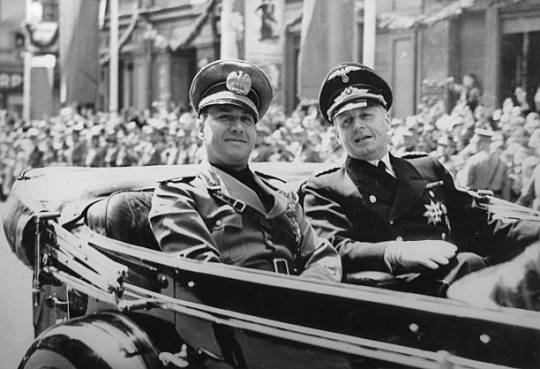
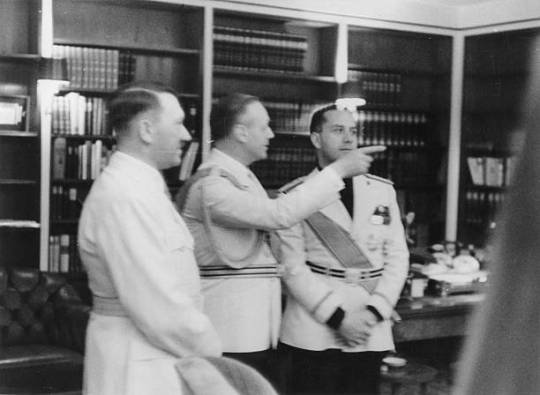
#reichblr#ww2#wwii#ww2 italy#ww2 germany#third reich#3rd reich#fascist italy#galeazzo ciano#ciano#joachim von ribbentrop#von ribbentrop#historical#historical figures#1940s
28 notes
·
View notes
Photo

Italian Troops Holding Rifles and Raising Bayonets, unknown photographer, 1940s.
220 notes
·
View notes
Text

American Jeeps travelling through a completely bombed out town during the drive towards Rome, circa May 1944.
Photographed by Carl Mydans for LIFE Magazine.
LIFE Magazine Archives: 1216104
#Jeep#Willys MB#us army#army#World War II#World War 2#WWII#WW2#WWII History#History#Italy#May#1944#my post
124 notes
·
View notes
Text

"USS Savannah (CL-42) afire immediately after she was hit by a German guided bomb during the Salerno Operation, on September 11, 1943. Smoke is pouring from the bomb's impact hole atop the ship's number three 6/47 gun turret."
NHHC: SC 243636
#USS Savannah (CL-42)#USS Savannah#Brooklyn Class#Light Cruiser#Cruiser#Warship#Ship#Allied invasion of Italy#Italian campaign#Salerno Operation#September#1943#World War II#World War 2#WWII#WW2#WWII History#History#United States Navy#U.S. Navy#US Navy#USN#Navy#my post
50 notes
·
View notes
Text
The Italian Resistance

These are some facts and curiosities about the Italian Resistance:
The Resistance movement was characterized in Italy by the unitary commitment of multiple and sometimes opposing political orientations (communists, shareholders, monarchists, socialists, Christian Democrats, liberals, republicans, anarchists), mostly united in the National Liberation Committee (CLN)
The historical period in which the movement was active began after the armistice of 8 September 1943 (the CLN was founded in Rome on 9 September), and ended in the first days of May 1945
There will be no real recognition by the Allies of the Italian Resistance and consequently of its representation in the Allied command structures, unlike other European resistance movements.
The first groups were formed in the Pre-Alps and Pre-Apennines to facilitate supplies from the plains and to be able to have safety rear areas in the high mountains.
A fundamental element of cohesion among the partisans was anti-fascism, the total rejection of the disastrous "fascist war" subordinated to the German ally; the contempt and radical criticism of the hierarchies of the Royal Army, especially of the senior officers considered inept and cowardly.
The rejection of the Royal Army by the vast majority of partisans did not allow true moral cohesion among the Resistance fighters
Equipped with poor equipment, the partisan formations did not adopt uniforms, dressed in disparate ways and used colored handkerchiefs for identification: red in the Garibaldi formations, green in the Justice and Freedom departments, blue in the autonomous groups.
An attempt was also made to standardize common clothing based on windbreakers and long trousers, and a simple and inconspicuous system of rank insignia was adopted.
Some groups of German deserters also joined the partisan struggle in Italy, the number of which is difficult to estimate since, to avoid reprisals against their families residing in Germany, they used fictitious names and were often considered by their original units as "missing". " and not "deserters" for a matter of propaganda.
In certain areas there was also the notable presence of Soviet soldiers who passed with the partisans after escaping from prison camps.
Sources:
Wikipedia: The Italian Resistance
The Resistance by Gianni Olivia
#25 aprile#italy#mediterranean#ww2#ww2 history#world war 2#second world war#proud antifascist#antifascist#antifascismo
7 notes
·
View notes
Text
antonio mazzoni yaaay 🇮🇹
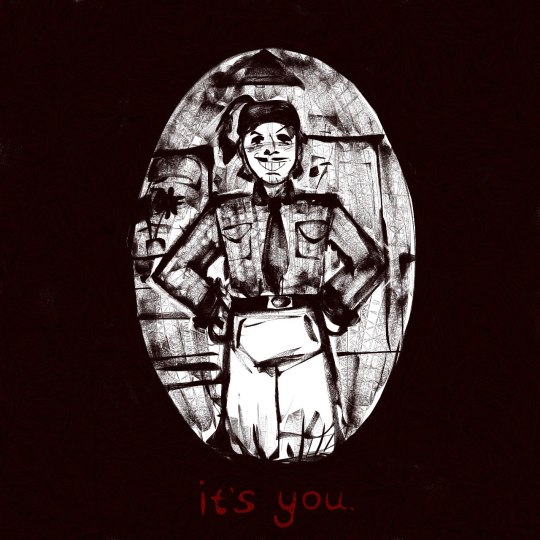

I love this. and him.

#doodle#art#digital art#fanart#oc#oc art#original character#oc trend#it's you#despite everything it's still you#ww2 history#ww2#italy#fascism is not good
8 notes
·
View notes
Text
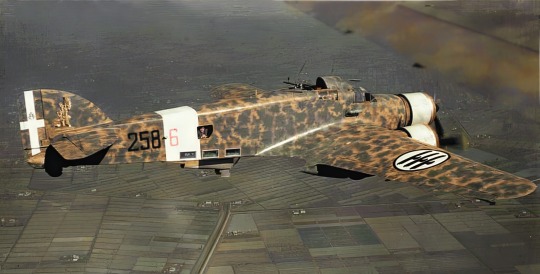
The Italian Savoia Marchetti SM-79 Sparviero based in Castelvetrano, Sicily. Maximum speed: 290 mph (460 km/h) at 12,430 ft (3,790 m)
#aircraft#airplane#ww2#wwii#aviation#military#dronescapes#savoia marchetti#italy#sicilia#sicily#sparviero#sm-79#castelvetrano#italian aircraft#italian plane#aviation history#aviation photography#colorized#vintage photography
162 notes
·
View notes
Text

A US soldier examines a destroyed German Tiger tank - Cori, Italy 1944
#world war two#ww2#worldwar2photos#history#1940s#ww2 history#wwii#world war 2#ww2history#wwii era#tiger tank#tiger#gi#us soldier#us army#us armed forces#usarmy#cori#Italy#tank
121 notes
·
View notes
Text

Another shot of Leutnant Alfred Hammer's Messerschmitt Bf 109G-6 trop "Yellow 1", 6./JG 53 Pik As (Ace of Spades), Cancello, Italy, 1943. For more, see my Facebook group - Eagles Of The Reich
42 notes
·
View notes
Text
I'll keep posting about them.
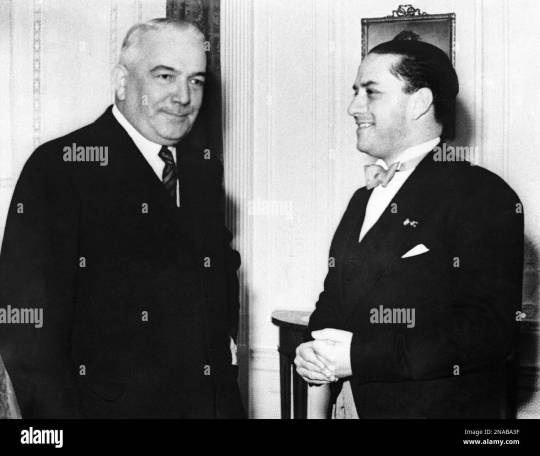
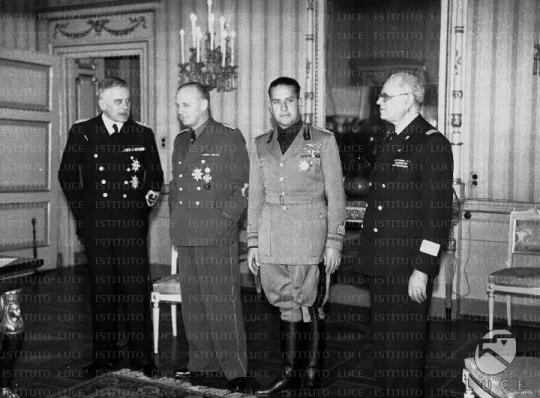
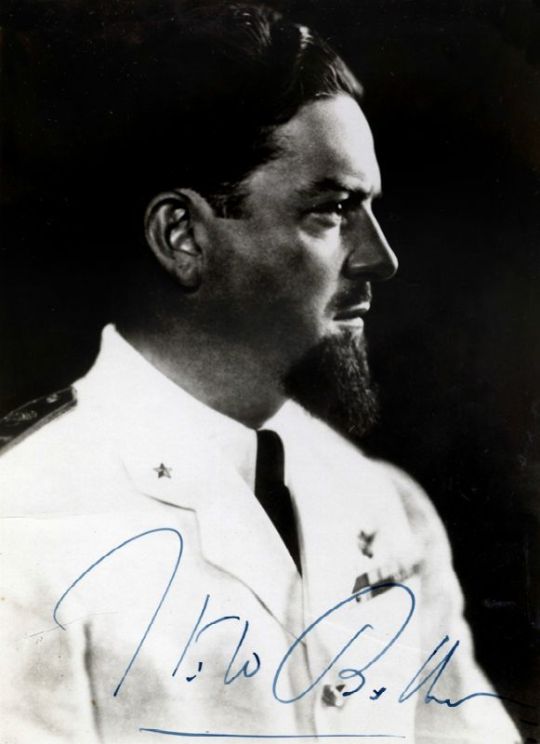
27 notes
·
View notes
